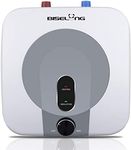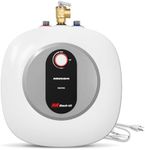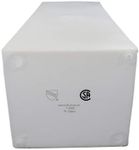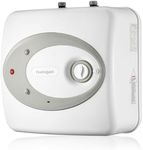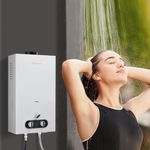Buying Guide for the Best Hot Water Tank For Food Truck
Choosing the right hot water tank for your food truck is crucial for ensuring you have a reliable supply of hot water for cooking, cleaning, and sanitation. The right tank will depend on your specific needs, including the size of your food truck, the type of food you serve, and the volume of water you use daily. Here are some key specifications to consider when selecting a hot water tank for your food truck.CapacityCapacity refers to the amount of water the tank can hold, usually measured in gallons or liters. This is important because it determines how much hot water you have available at any given time. Smaller tanks (2-6 gallons) are suitable for light use, such as handwashing and occasional dishwashing. Medium tanks (7-12 gallons) are better for moderate use, including more frequent dishwashing and light cooking. Larger tanks (13+ gallons) are ideal for heavy use, such as extensive cooking and cleaning. Choose a capacity that matches your daily water usage to ensure you have enough hot water without running out frequently.
Recovery RateThe recovery rate is the speed at which the tank can heat water, usually measured in gallons per hour. This is important because it affects how quickly you can get more hot water after the tank has been depleted. A higher recovery rate means the tank can heat water faster, which is beneficial for high-demand situations. For light use, a lower recovery rate may be sufficient. For moderate to heavy use, look for a higher recovery rate to ensure you have a continuous supply of hot water.
Power SourceHot water tanks can be powered by electricity, propane, or natural gas. The power source is important because it affects the installation process, operating costs, and availability of fuel. Electric tanks are easy to install and maintain but may have higher operating costs. Propane tanks are portable and efficient, making them a good choice for food trucks. Natural gas tanks are efficient but require a gas line connection. Choose a power source that is convenient and cost-effective for your food truck's setup.
Size and DimensionsThe physical size and dimensions of the tank are important because they determine whether the tank will fit in your food truck. Measure the available space carefully and compare it to the dimensions of the tank. Ensure there is enough room for installation and maintenance. Compact tanks are ideal for smaller food trucks with limited space, while larger tanks may be suitable for bigger trucks with more room.
Temperature ControlTemperature control allows you to set and maintain the desired water temperature. This is important for ensuring the water is hot enough for cooking and sanitation but not so hot that it poses a safety risk. Look for tanks with adjustable thermostats or temperature settings. For most food trucks, a temperature range of 120-140°F (49-60°C) is sufficient. Choose a tank with easy-to-use temperature controls to ensure you can maintain the right water temperature for your needs.
Durability and MaterialThe durability and material of the tank affect its lifespan and resistance to wear and tear. Stainless steel tanks are highly durable and resistant to corrosion, making them a good choice for long-term use. Glass-lined tanks are also durable and offer good insulation. Consider the material and build quality to ensure the tank can withstand the demands of a food truck environment. Choose a tank made from high-quality materials to ensure it lasts longer and requires less maintenance.

